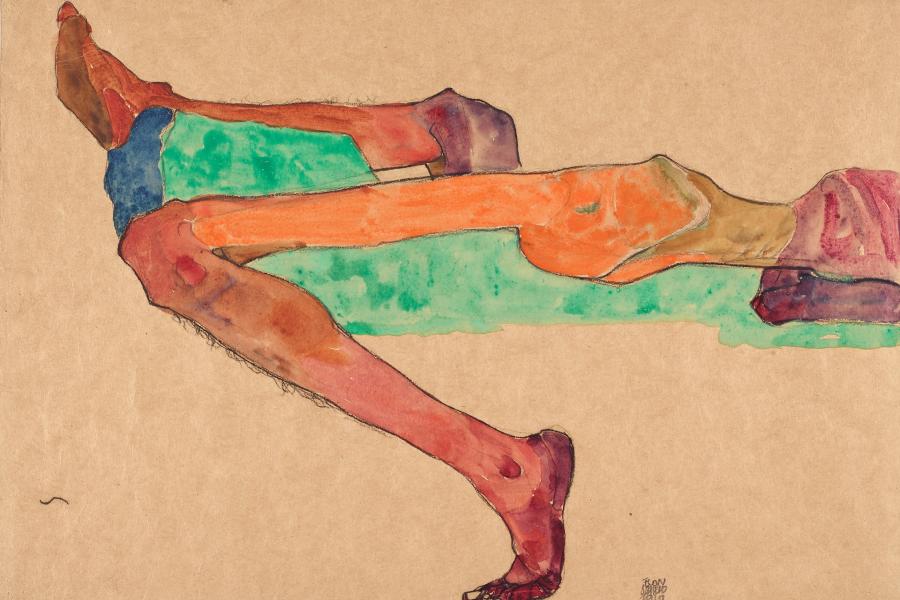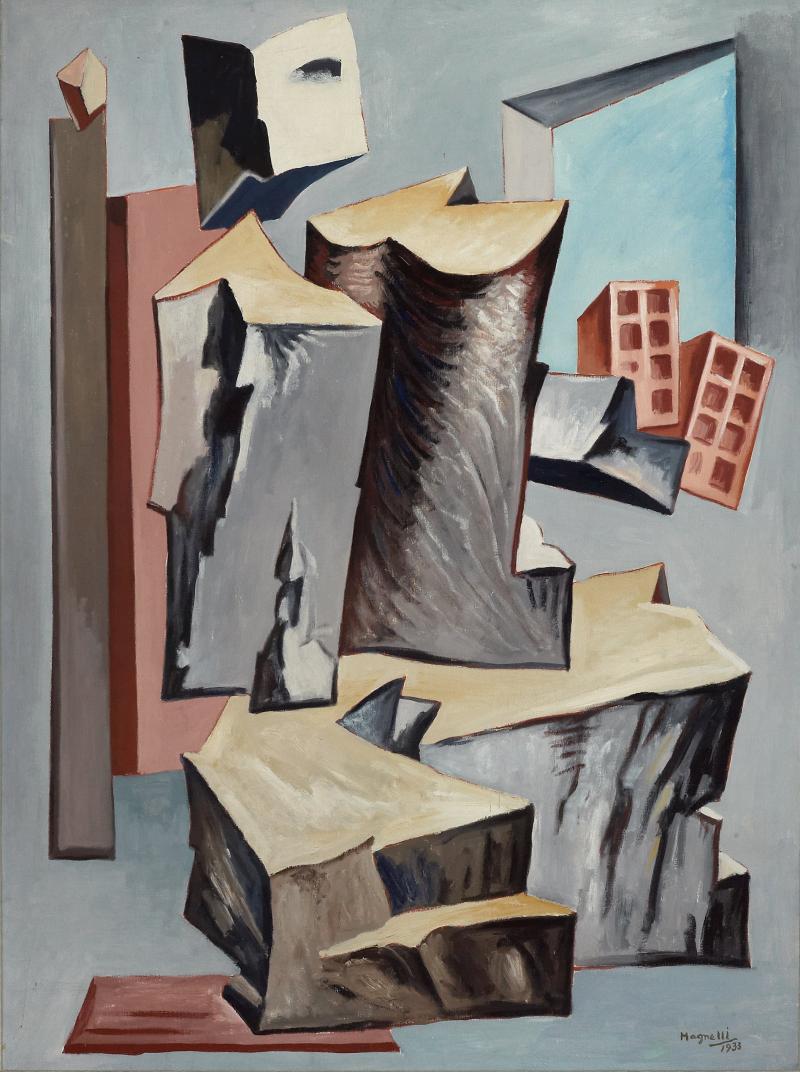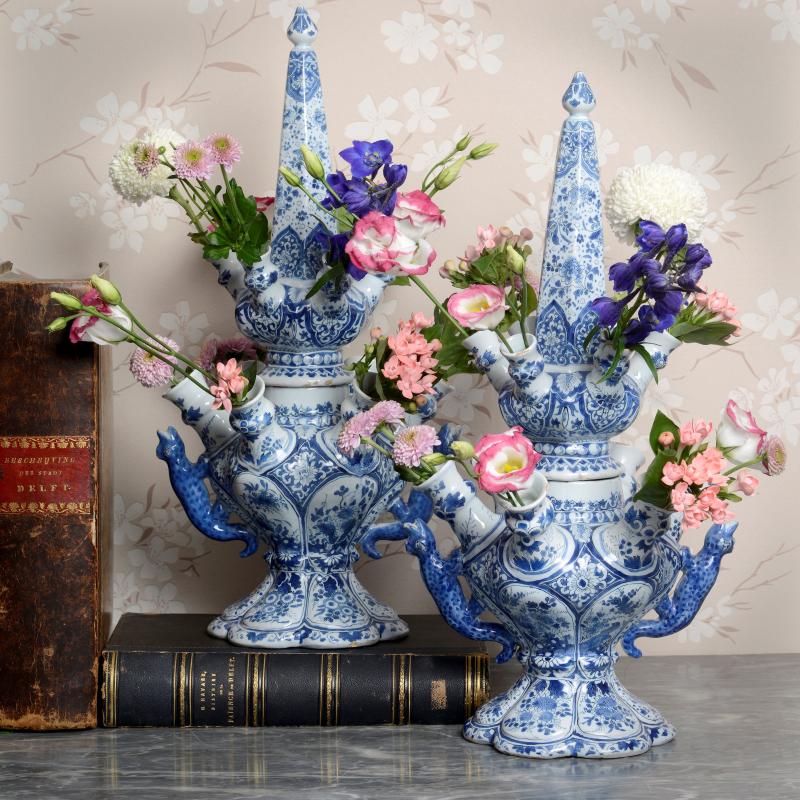TEFAF MAASTRICHT MARCH 2020
 RECLINING MALE NUDE EGON SCHIELE W&K-Wienerroither & Kohlbacher - Mit freundlicher Genehmigung von: tefaf
RECLINING MALE NUDE EGON SCHIELE W&K-Wienerroither & Kohlbacher - Mit freundlicher Genehmigung von: tefafWas: Presse
Wann: 12.11.2019
Wo: Maastricht, Niederlande
Presentations about each project will be displayed at TEFAF Maastricht 2020, which takes place from the 7-15 March 2020 (Early Access Day 5 March; Preview Day 6 March) at the MECC (Maastricht Exhibition and Congress Centre), Maastricht, The Netherlands.
TEFAF MUSEUM RESTORATION FUNDThe V&A, UK, and Los Angeles County Museum (LACMA), USA are the recipients of the 2020 TEFAF Museum Restoration Fund. Following visits to TEFAF Maastricht 2019, the two institutions applied for support from TEFAF for their distinct projects. The V&A are restoring The Kaufmann Office (1935-1937) by Frank Lloyd Wright (1867–1959), an exceptional complete interior by one of the best known architects of the 20th-century, whilst LACMA will analyse and restore a recently acquired oil painting, Pietá (c.1710-20) by Melchor Pérez Holguín (c.1660-c.1732), the first painting from Bolivia to enter LACMA’s collection of Spanish colonial art.
Each year, the organisation awards €50,000 from its Museum Restoration Fund.
THE V&A, UK – THE KAUFMANN OFFICE, BY FRANK LLOYD WRIGHTThe V&A, established in 1852, is the world’s leading museum of art, design and performance with collections unrivalled in their scope and diversity, spanning 5,000 years of human ingenuity. The collections include over 2.7 million works of artistic excellence, design and innovation. The Kaufmann Office (1935 – 1937), by Frank Lloyd Wright (1867 – 1959), is one of the most important 20th-century objects in the V&A’s collection and is the only complete Wright interior outside of the United States. It is regularly enquired about by visitors and, given its importance, it is essential that the work is restored and preserved for future generations to enjoy.
The office is unique in that it retains all of its original woodwork, furniture, carpets and upholstery textiles. It was design by Wright for his most distinguished patron, department store owner Edgar J. Kaufmann (1885–1955), for whom Wright simultaneously designed his most famous house, Fallingwater, in southwestern Pennsylvania. The office was constructed largely of modest materials – swamp cypress plywood and cypress-veneered blockboard – and its most unusual feature is the elaborate plywood relief mural, which covers the entire wall above Kaufmann’s desk. It is a fine example of Wright’s decorative tendencies. The Kaufmann Office enhances the V&A collections as well as our understanding of furniture and fabrics designed by Wright. The office was given to the V&A by Kaufmann’s son, curator Edgar Kaufmann, Jr (1910-1989), who was responsible for bringing his father and Wright together.
The grant from TEFAF will support the cleaning and restoration of the entire office, ensuring the stability of its structure. Through the restoration process, the V&A will gain insight into how the office was constructed and this information will be of interest to expert conservators around the world. Once the restoration is complete, the office will be installed at the V&A’s new Collection and Research Centre, one of two new public venues currently under construction in Stratford’s Queen Elizabeth Olympic Park as part of the V&A East project. Opening in 2023, the Centre, designed by award-winning architects Diller Scofidio + Renfro, will comprehensively reinvent the museum store as a visitor experience, transforming how the V&A’s extensive collection can be accessed and explored.
LACMA, USA - ‘PIETÁ’ BY MELCHOR PÉREZ HOLGUÍNThe largest museum in the western United States, the Los Angeles County Museum of Art (LACMA) was founded in 1910 as part of the Museum of History, Science, and Art and established itself as an independent institution in 1961. Today, LACMA has a collection of 142,000 objects that encompasses 6,000 years of artistic expression across the globe. Pietá (c.1710-20), by the 18th-century Bolivian artist Melchor Pérez Holguín (c.1660 – c.1732), is the first painting from Bolivia to enter LACMA’s collection of Spanish colonial art. With the TEFAF Museum Restoration Fund, LACMA will scientifically analyse and restore the painting.
Pietá, with its lavish application of gold (brocateado) – a technique generally associated with the Cuzco School but also used throughout the Hispanic world – reveals how Holguín skillfully absorbed various artistic traditions, representing a confluence of European and local styles, to create his own version of this canonical subject. Considering its age, the work is in good condition, but it requires a careful restoration, which is in progress under Joseph Fronek, Head of Paintings Conservation.
LACMA’s Conservation Science Department in collaboration with the Getty Conservation Institute has begun a complete analysis to document the painting’s materials, techniques, and condition. Various scientific means, including macro XRF scanning (MA-XRF) that will result in elemental mapping of pigment application, will help to determine how the artist intended the paint to appear.
Following restoration, the Pietá will be much closer in appearance to what it was originally. The rich darkness of the background will be dramatic against the glowing gold decorations and the painting should delight and inform visitors to LACMA for years to come. Pietá will make its debut in LACMA’s upcoming exhibition The Eye of the Imagination: LACMA’s Collection of Spanish Colonial Art, curated by Ilona Katzew and scheduled to open in 2021. The accompanying catalogue will include an in-depth scholarly analysis of the painting.
TEFAF MUSEUM RESTORATION FUND COMMITTEERachel Kaminsky, a private art dealer from New York who was formerly head of the Old Master paintings department at Christie’s; David Bull, a painting conservator and former Chairman of Painting Conservation at the National Gallery of Art, Washington D.C.; Dr Kenson Kwok, the former and founding director of the Asian Civilisations Museum and the Peranakan Museum in Singapore; Carol Pottasch, a senior restorer and conservator from the Mauritshuis, The Hague; and Ashok Roy, a museum scientist and a leading international expert in the materials and techniques of European Old Master Paintings, make up the international panel of experts which made the decision for the 2020 grant of the Fund.
PRINCE CLAUS FUNDTEFAF has partnered with the Prince Claus Fund for over a decade, working with the Fund to protect and preserve cultural heritage around the world which is threatened by man-made or natural disasters. This year, we are working together to support the National Archives of Suriname, which wants to bring together 20 of the country’s heritage institutions to develop emergency management and disaster preparedness plans.
PROTECTING AND SAVING SURINAME’S DIVERSE HERITAGESuriname has a diverse and dynamic culture, a multi-ethnic mix of indigenous groups with African, Asian and European influences, but many elements of its cultural heritage are largely unprotected. The centre of its capital, Paramaribo, was declared a World Heritage Site by UNESCO in 2002. Paramaribo is located at the mouth of the Paramaribo River just a few feet above sea level. Now, with climate change, the country’s capital suffers from frequent flooding. Most buildings are constructed of wood, so fire is a constant concern, and there are many cultural heritage sites and artefacts both in and outside of the capital that are at risk in various ways.
The first step in the protection of this heritage is to bring stakeholders of 20 institutions together with representatives of the government, Civil Protection Service and the Red Cross to identify their needs and priorities for training. A 5-day training programme will be organised for 40-45 participants that will include risk assessment, salvage and recovery techniques, and will culminate with the development of disaster management and mitigation plans for each institution.
The institutions involved include some of the most important archives, libraries, museums and sites in the country, such as Surinaams Museum, the NAKS “EU-FRIE Documentation Centre for Afro-Surinamese Culture”, the Roman Catholic Bishopric Archive, and the Tembe Art Museum of Maroon Art, to name a selection. Together, they represent the national memory, history and heritage of Suriname and yet there are virtually no plans for how to anticipate or respond to natural disasters, until now.
This project will be a significant step in safeguarding Suriname’s cultural heritage for generations to come. Linking the cultural institutions with government, emergency and humanitarian representatives ensures better coordination when disaster strikes. TEFAF will donate €10,000 to the project, which will support a large portion of the work to be done.
Tags: Alberto Magnelli, Alte Meister, Antiquitäten, Design, Druckgrafiken, Egon Schiele, Fabergé, Gemälde, Georg Tappert, Glas, Hendrik van Balen, Kunstwerke, Malerei, Möbel, Moderne Kunst, Pablo Picasso, Porzellan, Sammlung, Schmuck, Silber, Skulpturen, Zeichnungen, Zeitgenössische Kunst A FABERGÉ BOX CARL FABERGÉ A La Vieille Russie - Mit freundlicher Genehmigung von: /
A FABERGÉ BOX CARL FABERGÉ A La Vieille Russie - Mit freundlicher Genehmigung von: / Wer: The European Fine Art Foundation
 FEMME AU TABLIER PABLO PICASSO Thomas Gibson Fine Art - Mit freundlicher Genehmigung von: /
FEMME AU TABLIER PABLO PICASSO Thomas Gibson Fine Art - Mit freundlicher Genehmigung von: / Wer: The European Fine Art Foundation
 TALBOT-BEAUCHAMP BOOK OF HOURS CIRLE OF THE BEDFORD/DUNOIS MASTERS Dr. Jörn Günther Rare Books AG - Mit freundlicher Genehmigung von: /
TALBOT-BEAUCHAMP BOOK OF HOURS CIRLE OF THE BEDFORD/DUNOIS MASTERS Dr. Jörn Günther Rare Books AG - Mit freundlicher Genehmigung von: / Wer: The European Fine Art Foundation
 MÄDCHEN AM TISCH (BETTY MIT FÄCHER) (GIRL AT THE TABLE (BETTY WITH FAN)). WIETEK 147. GEORG TAPPERT Galerie Henze & Ketterer & Triebold - Mit freundlicher Genehmigung von: /
MÄDCHEN AM TISCH (BETTY MIT FÄCHER) (GIRL AT THE TABLE (BETTY WITH FAN)). WIETEK 147. GEORG TAPPERT Galerie Henze & Ketterer & Triebold - Mit freundlicher Genehmigung von: / Wer: The European Fine Art Foundation
 'CROISILLONS' CHANDELIER JEAN ROYÈRE Galerie Jacques Lacoste - Mit freundlicher Genehmigung von: /
'CROISILLONS' CHANDELIER JEAN ROYÈRE Galerie Jacques Lacoste - Mit freundlicher Genehmigung von: / Wer: The European Fine Art Foundation
 'CROISILLONS' CHANDELIER JEAN ROYÈRE Galerie Jacques Lacoste - Mit freundlicher Genehmigung von: /
'CROISILLONS' CHANDELIER JEAN ROYÈRE Galerie Jacques Lacoste - Mit freundlicher Genehmigung von: / Wer: The European Fine Art Foundation
.
 THE WEDDING FEAST OF PELEUS AND TETIS HENDRICK VAN BALEN Arnoldi-Livie - Mit freundlicher Genehmigung von: tefaf / The European Fine Art Foundation
THE WEDDING FEAST OF PELEUS AND TETIS HENDRICK VAN BALEN Arnoldi-Livie - Mit freundlicher Genehmigung von: tefaf / The European Fine Art Foundation PIERRES N° 4 ALBERTO MAGNELLI Applicat-Prazan - Mit freundlicher Genehmigung von: tefaf / The European Fine Art Foundation
PIERRES N° 4 ALBERTO MAGNELLI Applicat-Prazan - Mit freundlicher Genehmigung von: tefaf / The European Fine Art Foundation PAIR OF BLUE AND WHITE FLOWER VASES ADRIANUS KOCX Aronson Antiquairs - Mit freundlicher Genehmigung von: tefaf / The European Fine Art Foundation
PAIR OF BLUE AND WHITE FLOWER VASES ADRIANUS KOCX Aronson Antiquairs - Mit freundlicher Genehmigung von: tefaf / The European Fine Art FoundationCopyright © 2025 findART.cc - All rights reserved
